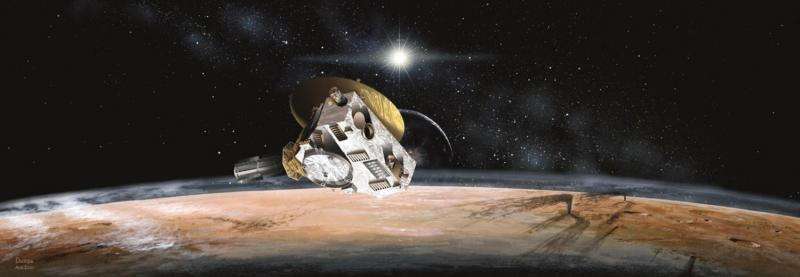Pluto just the beginning for New Horizons Kuiper Belt journey

NASA's New Horizons spacecraft is far from done making waves in cosmic discoveries. Up next: Kuiper Belt Object 2014 MU69 a billion miles beyond Pluto.
But to understand where New Horizons is going next it's important to know why Pluto was selected for a flyby mission by NASA.
In 1992, the first object of the Kuiper Belt beyond Pluto was found using a University of Hawaii telescope, confirming there are bodies beyond the eight planets in orbit within the solar system. This discovery boosted the unexplored territory of the Kuiper Belt to the top of the space exploration to-do list, said Alan Stern, New Horizons principal investigator.
Stern spoke at the Aerospace Division of the American Society of Civil Engineers (ASCE) Earth & Space conference in Orlando this week discussing the spacecraft's next mission and data still to come from the Pluto flyby last July.
The new mission is on target for a Jan. 1, 2019, flyby of Kuiper Belt Object 2014 MU69, but that is one of many, said Stern. New Horizons spacecraft could visit 20 different Kuiper Belt Objects. The spacecraft is currently healthy and has enough power for 20 years, he added.
On Wednesday, while Stern was speaking at the ASCE conference, which was hosted by Missouri University of Science and Technology, the final proposal for the Kuiper Belt Object mission was being submitted, he said.
Not exploring the massive Kuiper Belt would be like leaving out the Pacific Ocean on a map of Earth, said Stern.
According to NASA, Kuiper Belt Objects or KBOs are what remain of the formation of the solar system about 4.6 billion years ago.
"(These) objects that have essentially been left untouched since the solar system formed," said Daniel Batcheldor, head of the Physics and Space Sciences at Florida Institute of Technology in Melbourne.
While Pluto is the best known Kuiper Belt Object, it's on the edge of the belt that runs around the planets in our solar system beyond Neptune. Think of KBOs as possible planets, small moons and comets, but in the thousands.
Focusing in on the comets, University of Central Florida professor of physics Dan Britt was selected for New Horizons' science team to study the geology and structure of the 4 billion-year-old undisturbed frozen objects during the spacecraft's next mission.
"It's really, in planetary science, one of the great frontiers and it's not like this doesn't interact with Earth and us as humans," Britt said of the Kuiper Belt.
Every now and again one of the comets from the Kuiper Belt gets loose and whacks planet Earth, he explained.
If the scientific bonanza of discoveries on Pluto was illuminating, the next phase of New Horizons' journey into the Kuiper Belt will shed even more light on the mysterious frozen world.
Batcheldor says that KBO 2014 MU69, being much farther beyond Pluto, will be a better representative of the Kuiper Belt.
Meanwhile, the astronomy community is far from done learning from the historic Pluto flyby.
Even before last July's visit, the discoveries about Pluto and its moons had amazed the science community and public alike with the imagery that came from the baby grand-sized spacecraft, but the data from the New Horizons flyby is still only about halfway done downloading to Earth.
The rest is expected to be down by October.
©2016 The Orlando Sentinel (Orlando, Fla.)
Distributed by Tribune Content Agency, LLC.





















